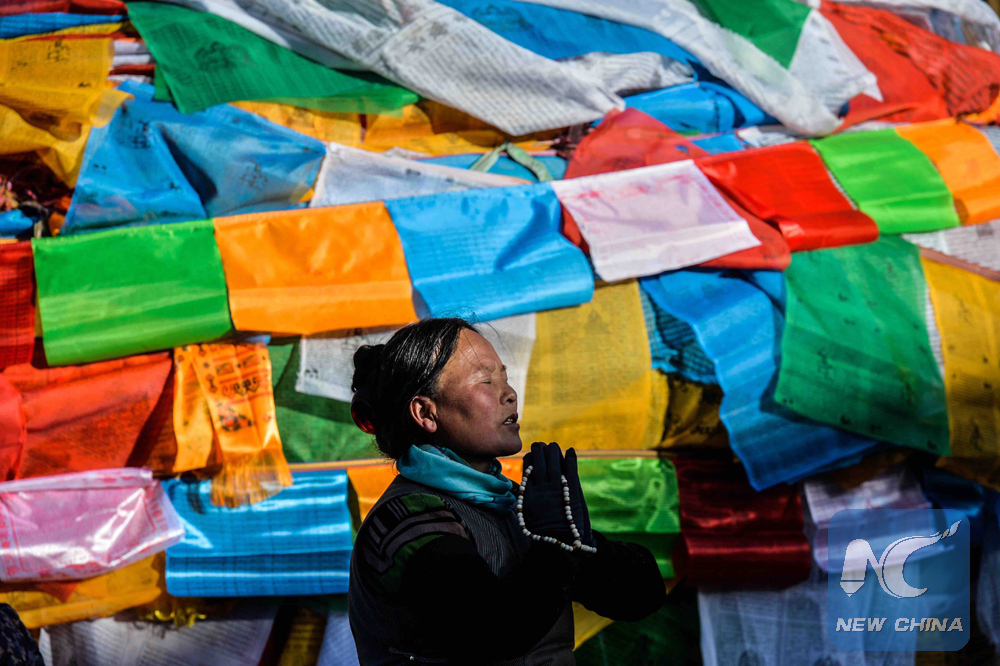
A Tibetan Buddhism believer prays on the Barkhor Street in Lhasa, capital of southwest China's Tibet Autonomous Region. (Xinhua/Purbu Tashi)
By Zhang Hui
BEIJING, July 15 (Xinhua) -- The "holy city" of Lhasa, capital of southwest China's Tibet Autonomous Region, has always been a dream destination among many domestic and overseas travelers.
It's a city full of wonders and charm: the breathtaking Potala Palace, the sacred Jokhang Temple, the lively Barkhor Street and the devout Buddhist pilgrims...The list can go on and on.
But here I would like to give you five personal tips that constitute the highlights of my trip to Lhasa last week.
Tibetan-Style Braids
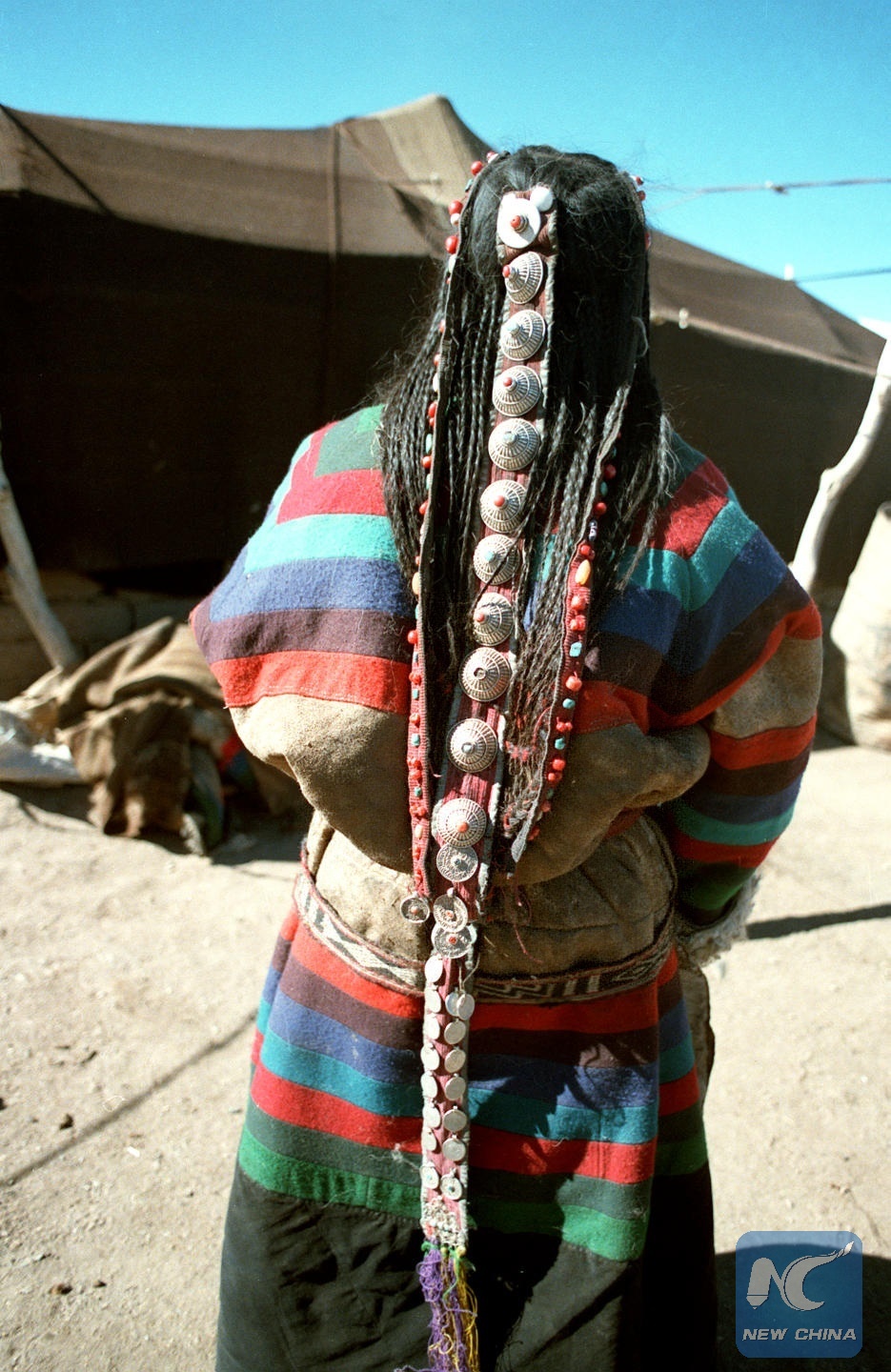
A Tibetan woman. (Xinhua/Jue Guo)
In Tibet, nomad women always braid their long hair into numerous thin plaits and decorate them with colorful threads and various kinds of jewelry - turquoises, corals, agates and amber.
If you want to get yourself a little bit of exotic Tibetan look while traveling in Lhasa, try the hairstyle! It's the easiest and cheapest way.
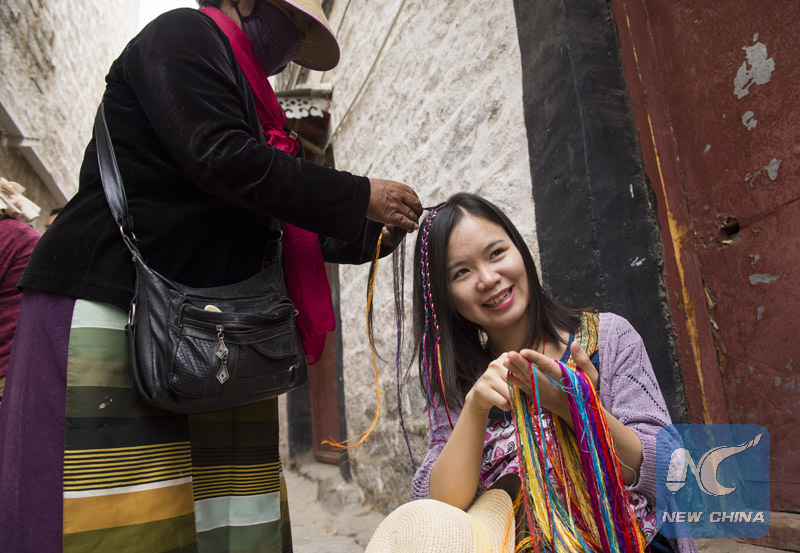
A Tibetan woman is making hair braids for me. (Xinhua/Liu Dongjun)
How to do it? Go to Barkhor Street or the square in front of the Jokhang Temple and look for local Tibetan women who are wearing traditional costumes and holding mufti-colored threads. Walk to them and they will be very happy to make hair braids for you!
It's not expensive. Usually 2-5 yuan (0.3-0.75 USD) for one braid depending on the quality of the threads.
Early Morning Visit to Jokhang Temple
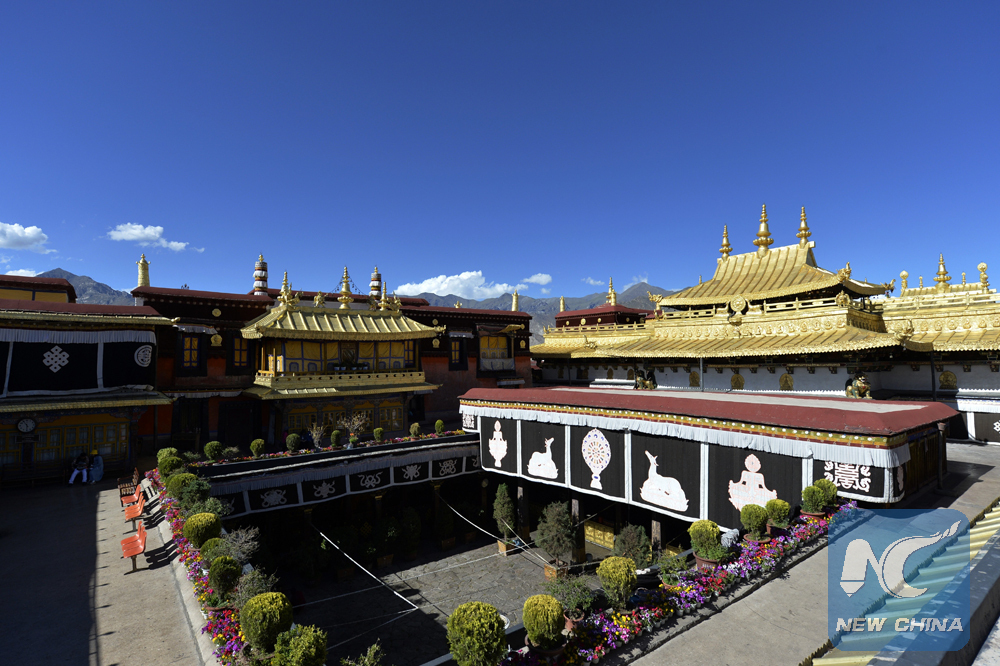
Photo of the Jokhang Temple under the blue sky in Lhasa. (Xinhua/Liu Dongjun)
The Jokhang Temple, which means "the House of Buddha" at the heart of the old town of Lhasa is the holiest site in the Tibetan Buddhism and the ultimate pilgrimage destination for prostrating pilgrims as it enshrines a precious statue of Sakyamuni.
Visiting the Jokhang Temple is a must if you want to experience the religious side of Lhasa and the best time to do that is in the early morning.
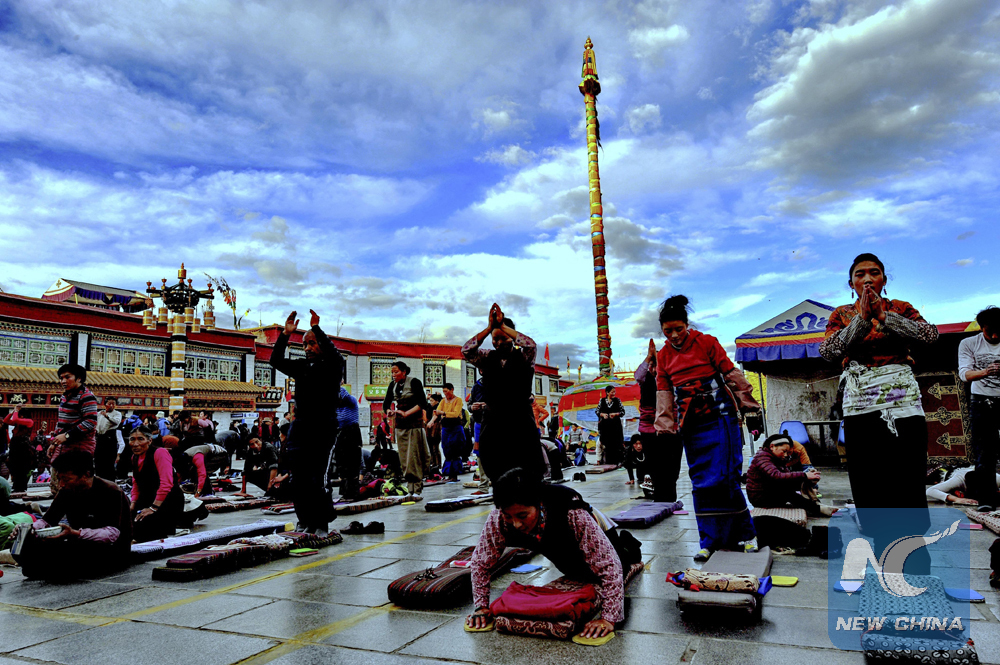
Followes of the Tibetan Buddhism perform prostration outside the Jokhang Temple in Lhasa. (Xinhua/Zhang Guojun)
Around 6 a.m., hundreds of thousands of devout pilgrims began to gather outside the temple. Some of them are from thousands of miles away, usually on foot as a way of penance. Before they file in, they would circumambulate the temple clockwise, spinning prayer wheels while humming prayers or prostrating on their bellies. It's the daily climax of religious atmosphere in Lhasa and many travelers say they are forever impressed of the scene.
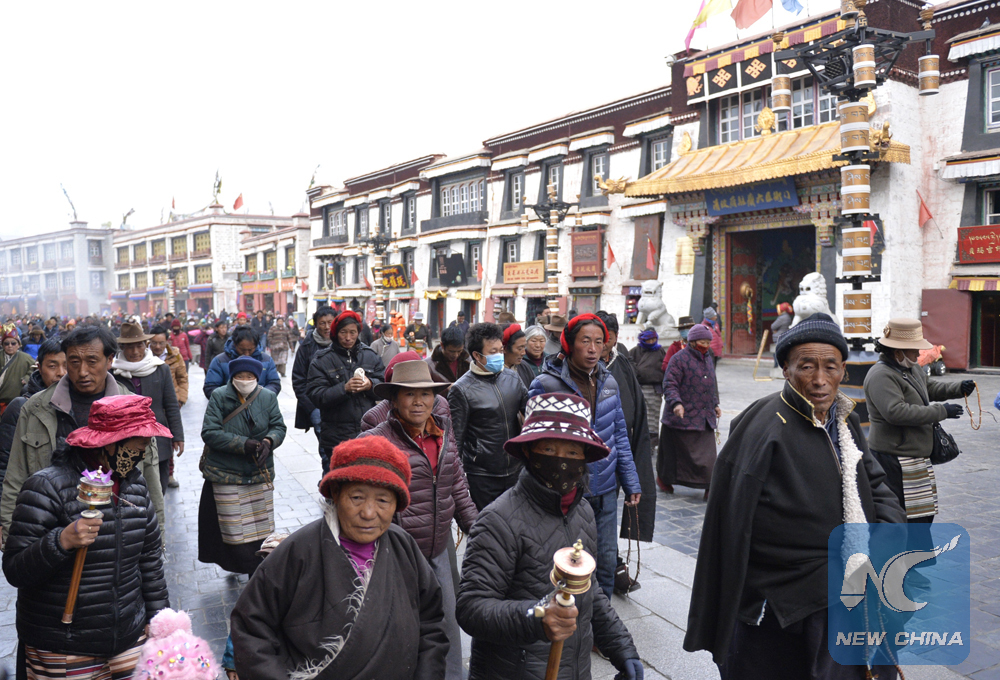
Pilgrims spin prayer wheels nearby the Jokhang Temple in Lhasa. (Xinhua/Liu Dongjun)
Please be noted that the temple is open from 7:30 to 17:30 but morning is mainly reserved for pilgrims. As a tourist, you can walk around the temple and savor the religious atmosphere at the outside in the morning and explore the inside after 11:30. A tour guide is highly recommended to help you know more about the history and story of the temple.
Gorgeous Night View of Potala Palace
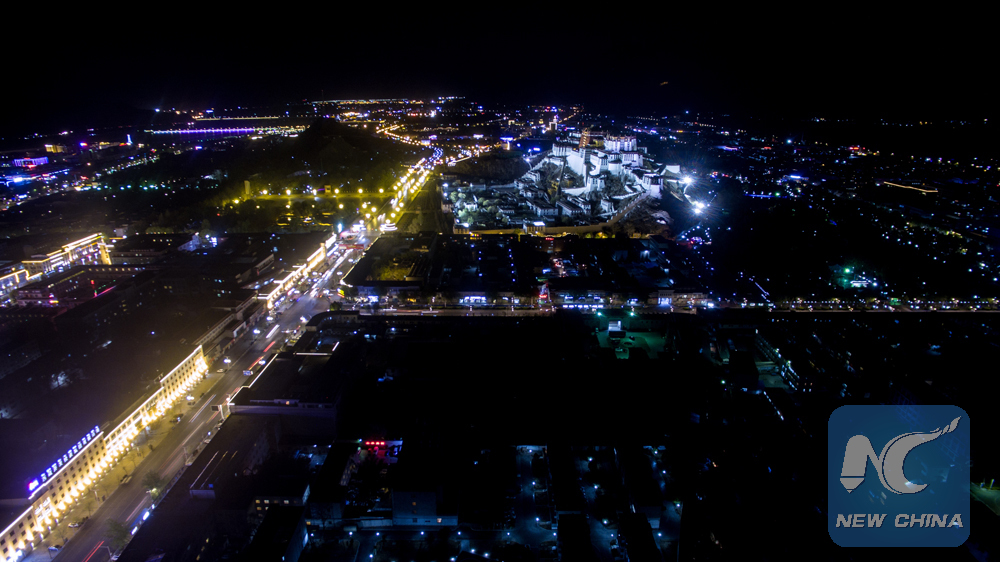
Photo of night view of the Potala Palace in Lhasa. (Xinhua/Purbu Tashi)
The Potala Palace is the landmark of Lhasa and Tibet. The over 1300-year-old palace buildings stand 13 stories high and are the world's largest and most intact ancient castle-style complex located on the highest altitude.
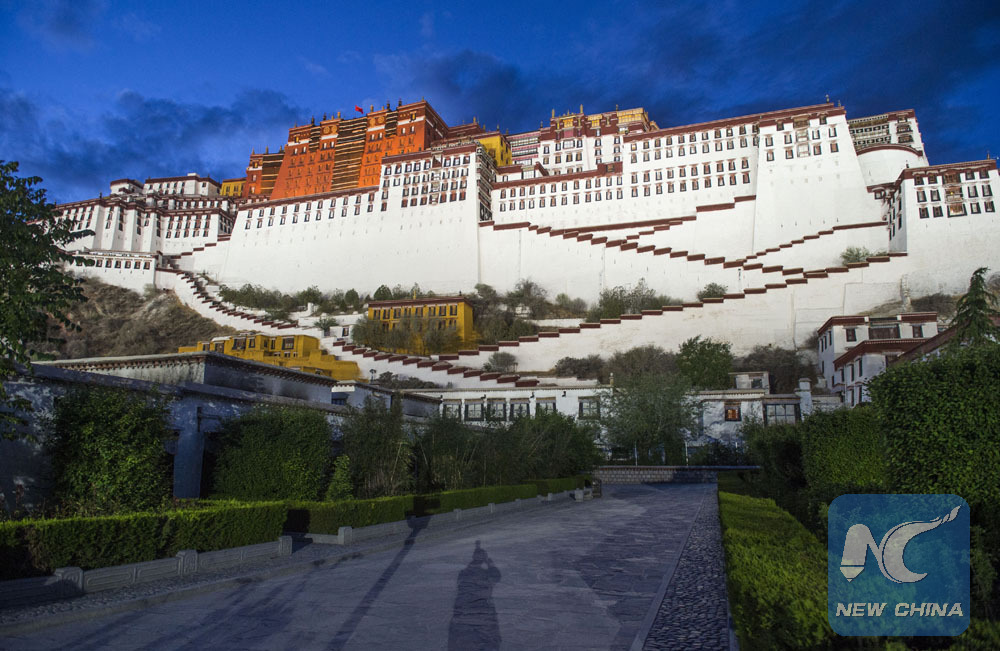
Photo of the night view of the Potala Palace in Lhasa (Xinhua/Liu Dongjun)
It's breathtaking and amazing to look up to the grand and imposing Potala Palace at day time. But in the evening when the bustling tourists are gone and the palace's lights are all turned on, the complex takes on a different look - quiet, peaceful and gorgeous. You can take a boat on the Lhasa River or find a well-located restaurant to enjoy the night view of the Potala Palace.
Tricycle Tour Around Old Town
The old town of Lhasa, also the main scenic area, is not large and most parts are accessible on foot or by bus. But if you want to try something more interesting, adventurous and efficient, take a tricycle.
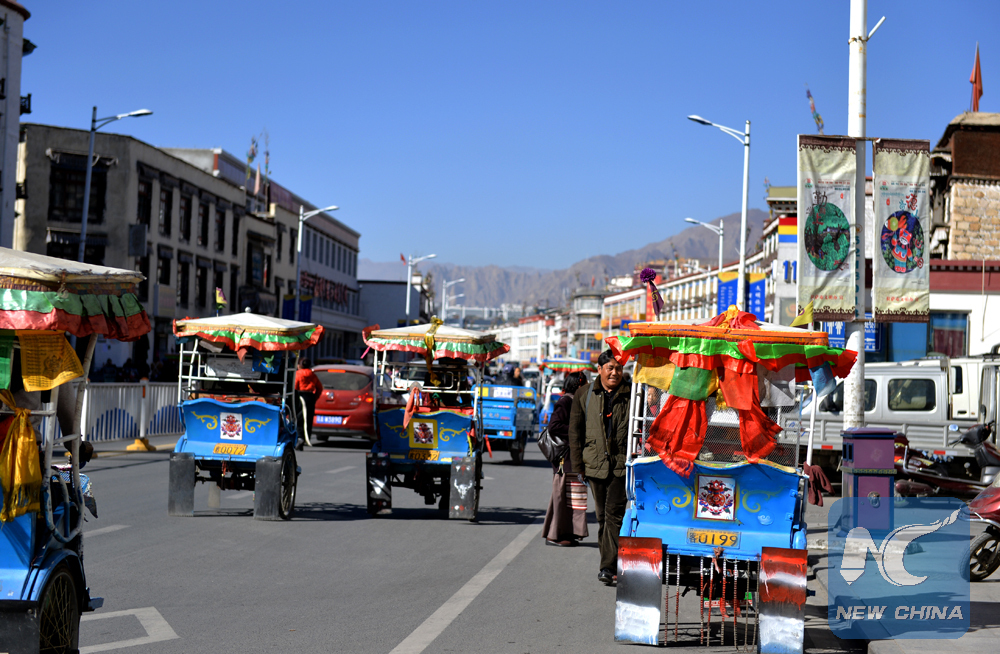
Decorated tricycles on Lhasa street. (Xinhua/Liu Dongjun)
The tricycles are cute, decorated in a bright-colored Tibetan style and they are everywhere. You only need to pay 30 to 50 yuan (4.49-7.48 USD) to the driver for a two or three hours' trip in the city. Whenever you see interesting things and spots, kindly ask the driver to stop. Very personal and customized right? Oh, the tricycle drivers are good tour guide too - answering questions, telling stories and introducing Tibetan cultures.
Tibetan Cuisine
Food always deserves special attention when traveling in China, a country boasting countless delicious food.
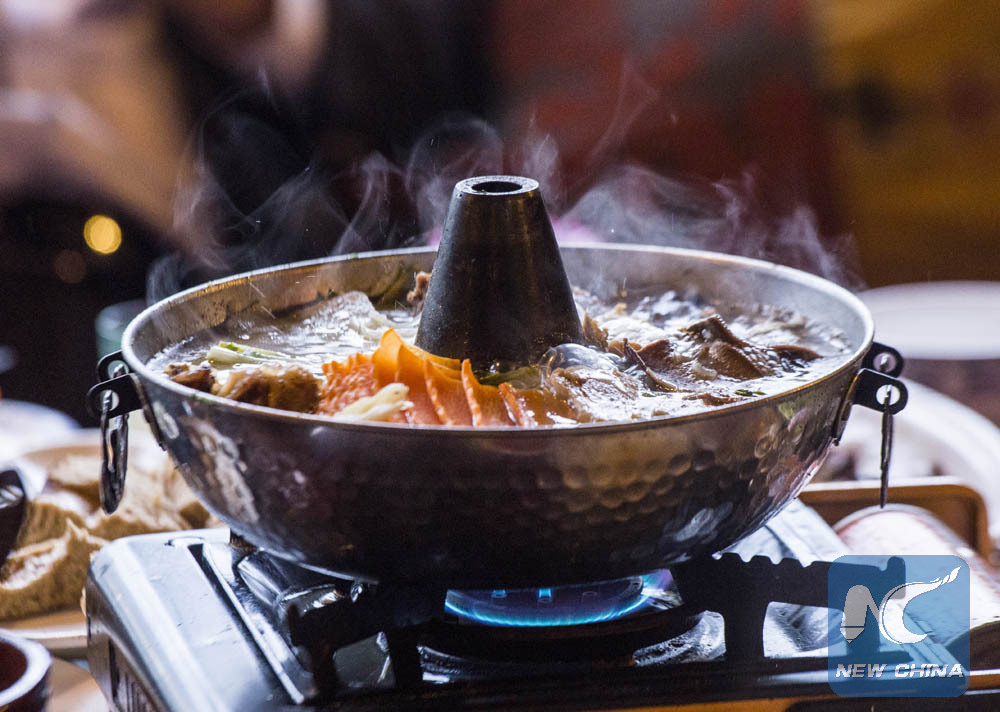
Tibetan-style hot pot. (Xinhua/Liu Dongjun)
Highland barley, meat and dairy products are the main ingredients of the Tibetan cuisine. Tibetan people have formed their own eating habits due to special natural conditions there, such as high altitude, limited arable land, and mostly dry and cold climate.
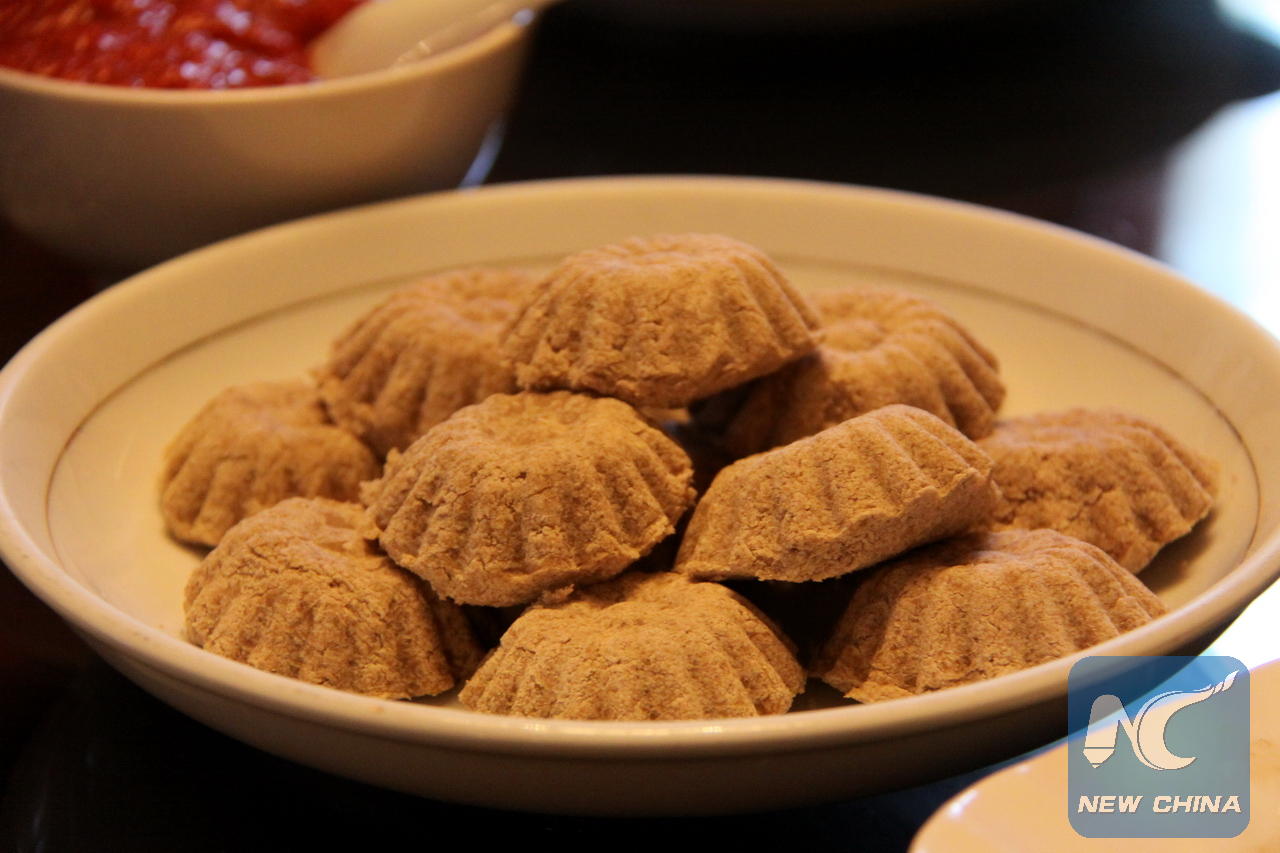
Tsampa, the staple food in Tibet. (web photo)
Tsampa, dough made with roasted barley flour and yak butter, is the staple food in Tibet. Yak, beef and mutton, which are rich in protein and helpful in coping with the cold, are the most commonly eaten meat. Except for the normal cooking ways, some Tibetans eat raw meat. Dried meat strips and sausages are also popular.
Beverages such as butter tea, sweet tea and barley beer are also indispensable in Tibetan people's daily life. While butter tea is quite salty and tastes more like soup, sweet tea is similar to English and Indian tea!
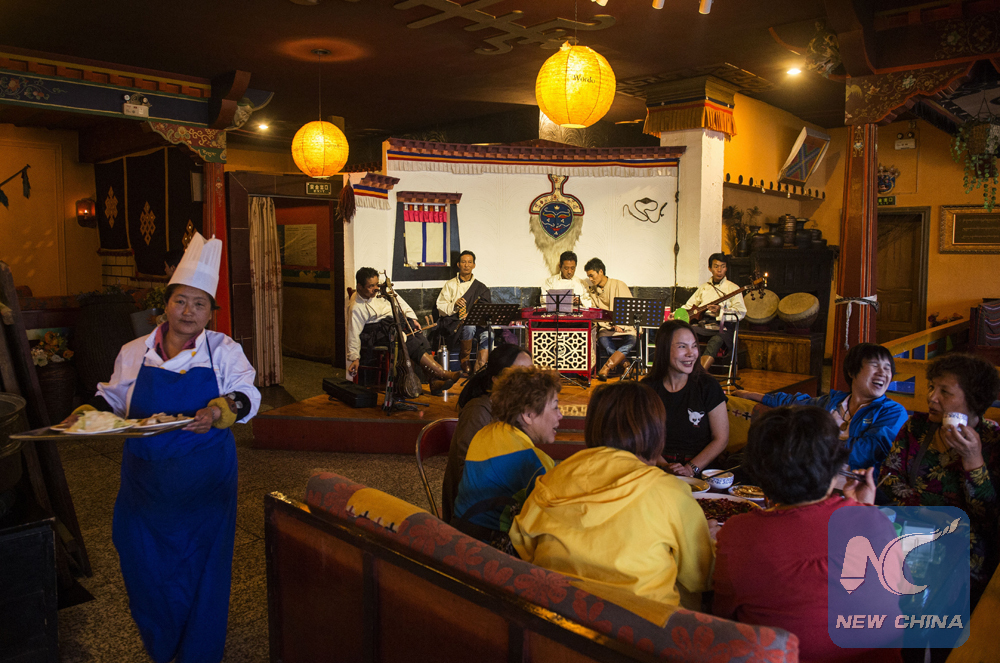
A Tibetan food restaurant in Xigaze City of Tibet Autonomous Region. (Xinhua/Liu Dongjun)
Tibetan foods are very likely totally different from what you are accustomed to. But, believe me, it's worth trying and who knows, you might like it! One more tip: the most famous Tibetan restaurant in Lhasa is Makye Ame. Go there and find out the beautiful love story behind it.

